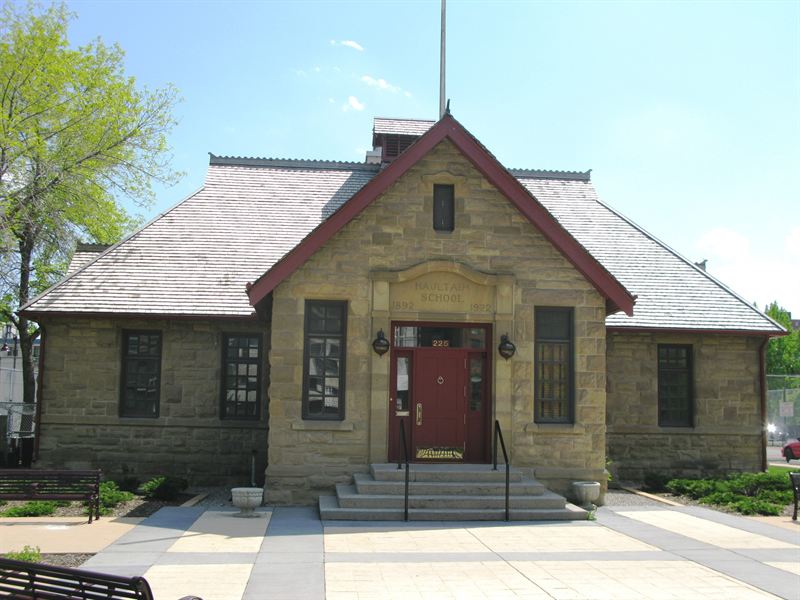Haultain School, est. 1894 – Beltline
Construction on the Haultain School began in 1893, ten years after the Canadian Pacific Railway line had reached Calgary. In the decade following the arrival of the railway, the population of Calgary had grown substantially and the need for new schools became increasingly pressing. Haultain School (originally the South Ward School) was completed in 1894. Students at the new school were an eclectic mix, including the children of railway workers, new immigrants, and some of Calgary’s wealthier citizens.
During the first ten years that it operated, the school’s academic curriculum was complemented by a cadet program and industrial and manual training for boys. With continued population growth, more classroom space was deemed necessary. In 1907, a new ten-room school was built on the site of the South Ward School. Three years later, both schools’ names were changed to commemorate the memory of Sir Frederick Haultain, the President of the Executive Council (Premier) of the North-West Territories Legislative Assembly and a prominent voice for western Canadian concerns.
Following the construction of the new school, the original ward school (now known as “the Annex”) was used as a workshop, office space, classroom space, gymnasium, and auditorium. The school was eventually closed in 1962.
Haultain School is a remarkable architectural statement – an early and small-scale adaptation of the Richardson Romanesque style. This style, made popular in the United States in the late nineteenth century, was typically employed on large-scale civic and religious buildings.
The appearance of this style in western Canada in 1894 – only four years after its embodiment in Toronto’s City Hall – is surprising, as is its expression in a building of such modest scale. The Richardson Romanesque style derives from, but also expands, the Romanesque Revival architectural vision that was commonly used for western Canadian schools of this period. Elements of the Richardson Romanesque style include the rock-faced sandstone exterior and contrasting elements, the round arched windows, and the horizontal stringcourse at the base of the building. Combined, these features create a sense of weightiness and solidity that is reinforced by the low-pitched roof with wide eave overhangs that imparts the building with a robust horizontality.
Calgary’s first sandstone school, first school with electricity and running water, and first school embodying Richardson Romanesque architecture, the building was a pioneering construction in the late nineteenth century.
Article and photo provided by Discover Historic Calgary via calgary.ca. Source: Alberta Culture and Community Spirit, Historic Resources Management Branch (File: Des. 907)










